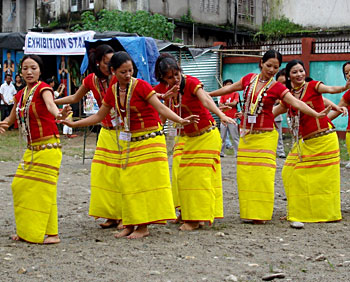Pattini Worship is the ritual where a woman is bequeathed with the status and honour of a man. The term Pattini refers to a chaste woman who has developed complete fidelity to her husband. In the ancient Tamil country, women were deprived of proper social dignity. But a woman could rise up to man`s status by developing loyalty and faithfulness. Thus when a woman ascended to a higher status and enjoyed the honour and rights usually enjoyed by men but unreasonably denied to women, then the ritual was identified as Pattini Worship. The various rituals and ceremonies associated with Pattini worship were mainly performed to summon blessings and respite for people in the land.
Cilappatikaram, one of the Five Great Tamil Epics, revolves around the legend of Pattini Devi whose impact became a righteous faith for the people. The tale of Kannaki in Cilappatikaram had a great influence on the women in Tamil Nadu. As Kannaki effectively argued her point against the Pandya king and burnt the entire Madurai city on a particular Friday in the Tamil month of Ati, both the day and the month have become a fortunate and auspicious day for the women in Tamil Nadu and are celebrated in Mariyamman temples. The epic states that Kannaki wore golden anklets and when she ascended to the level of a goddess with golden anklets, women began adorning silver ornaments instead of gold on their anklets.
In some versions of the story it is assumed that goddess Kali or Durga, was incarnated as Kannaki. After Kannaki set Madurai on fire by treading on fire, this ritual has gained importance in Draupadi temple festivals. Ilango Adigal (Ilanko Atikal) portrayed the ritual of Pattini Worship in his epic Cilappatikaram. Although the role of Kannaki ends in the second canto of the epic, Ilango dedicated the third canto to veneration of Kannaki and induction of Pattini worship in the country. Title of the epic Cilappatikaram is derived from the anklets worn by Kannaki, as the Tamil term for anklet is Cilampu. The ornament is cited only a few times in Cilappatikaram.
The cilampu of Kannaki is shown for the first time in the first chapter of the first canto known as Pukark-kantam. It was on her ankles. It appears gain in the 9th chapter of the same canto. In the 2nd canto or Maduraik-kantam the cilampu appears twice. Firtly it is seen on the last day of Kovalan`s life in Madurai and Secondly when Kovalan died, Kannaki took the anklet in her hand and went to the Pandya ruler`s court where she broke it and proved her husband`s innocence. In the third canto or Vancik-kantam, after Kannaki was sanctified the anklet appears before the Chera king.



















